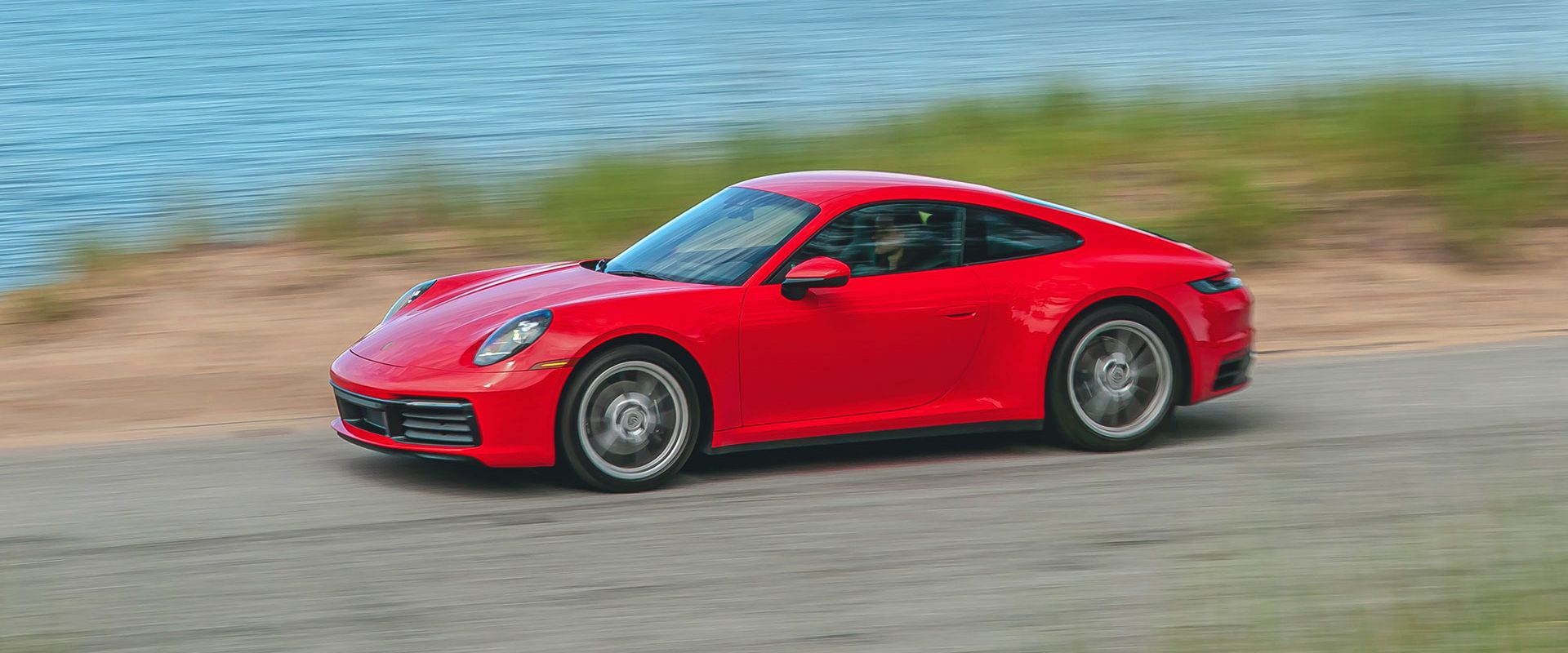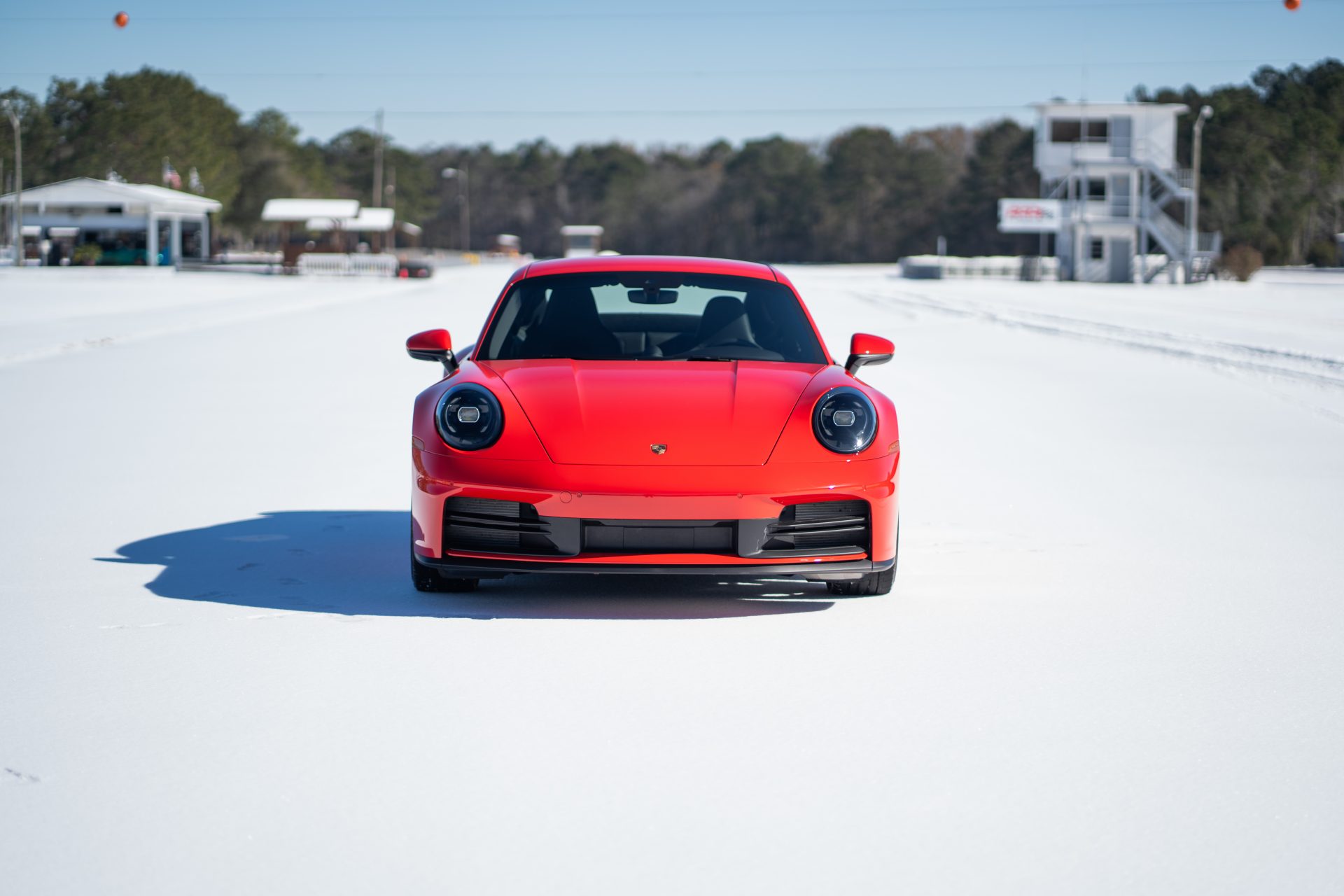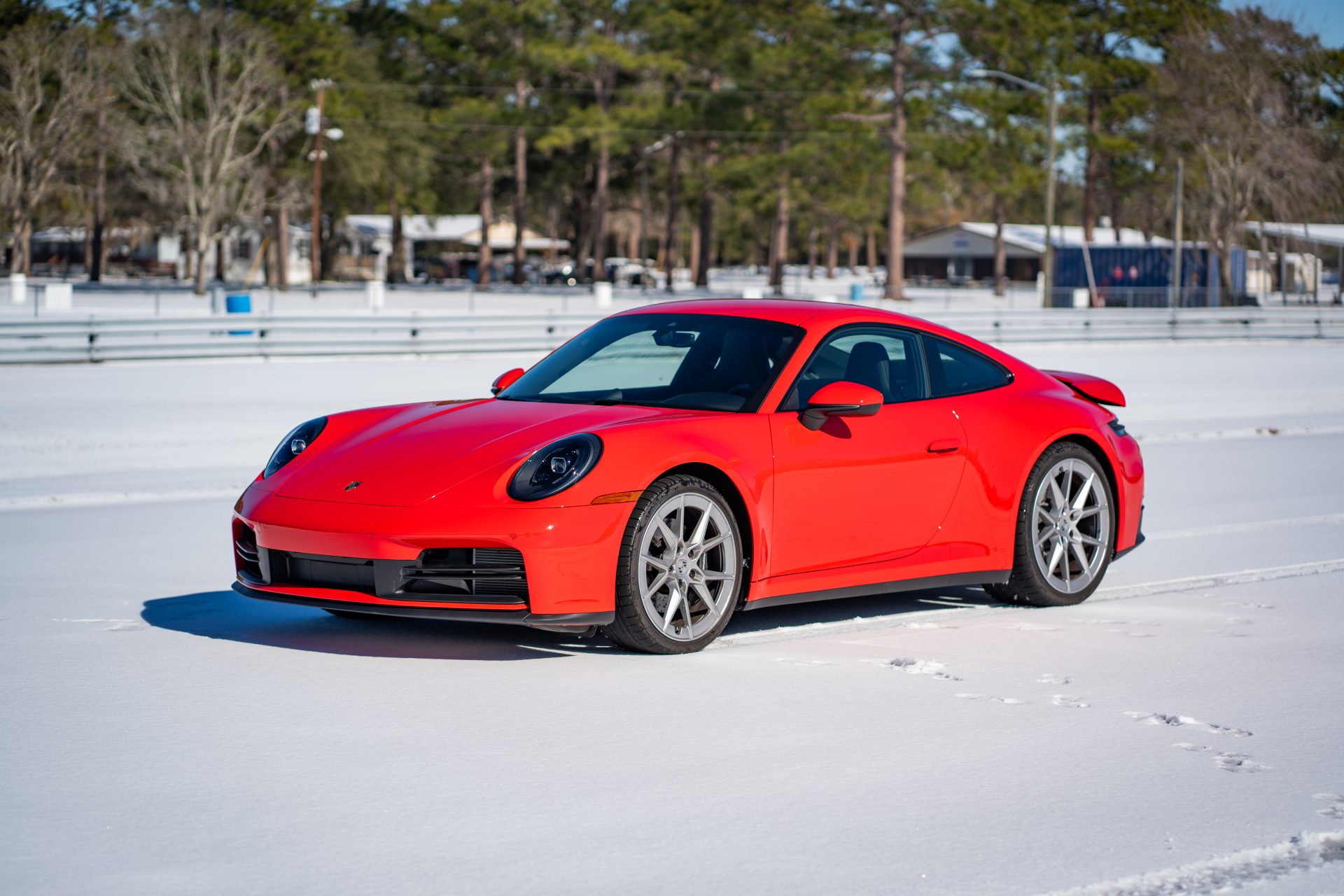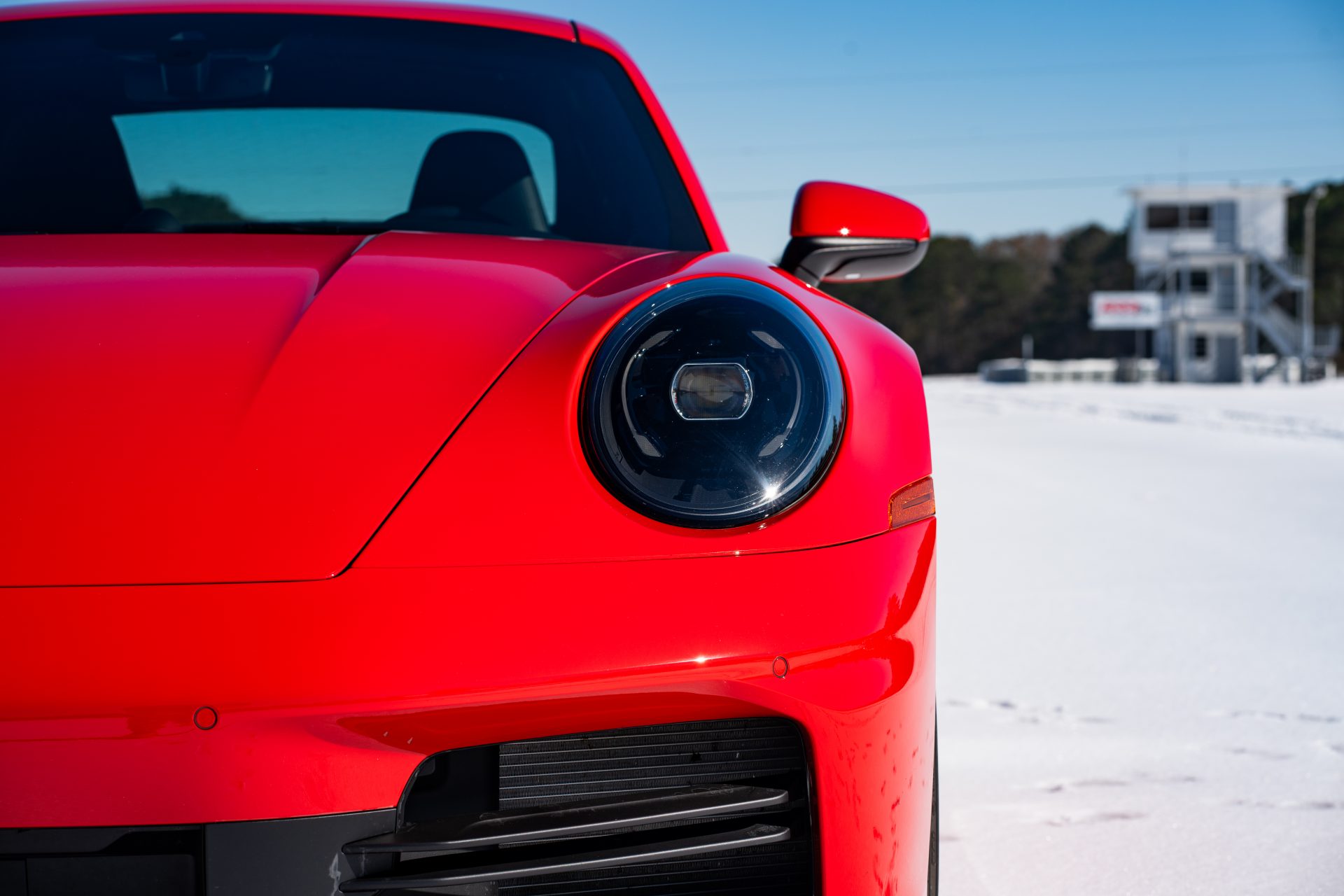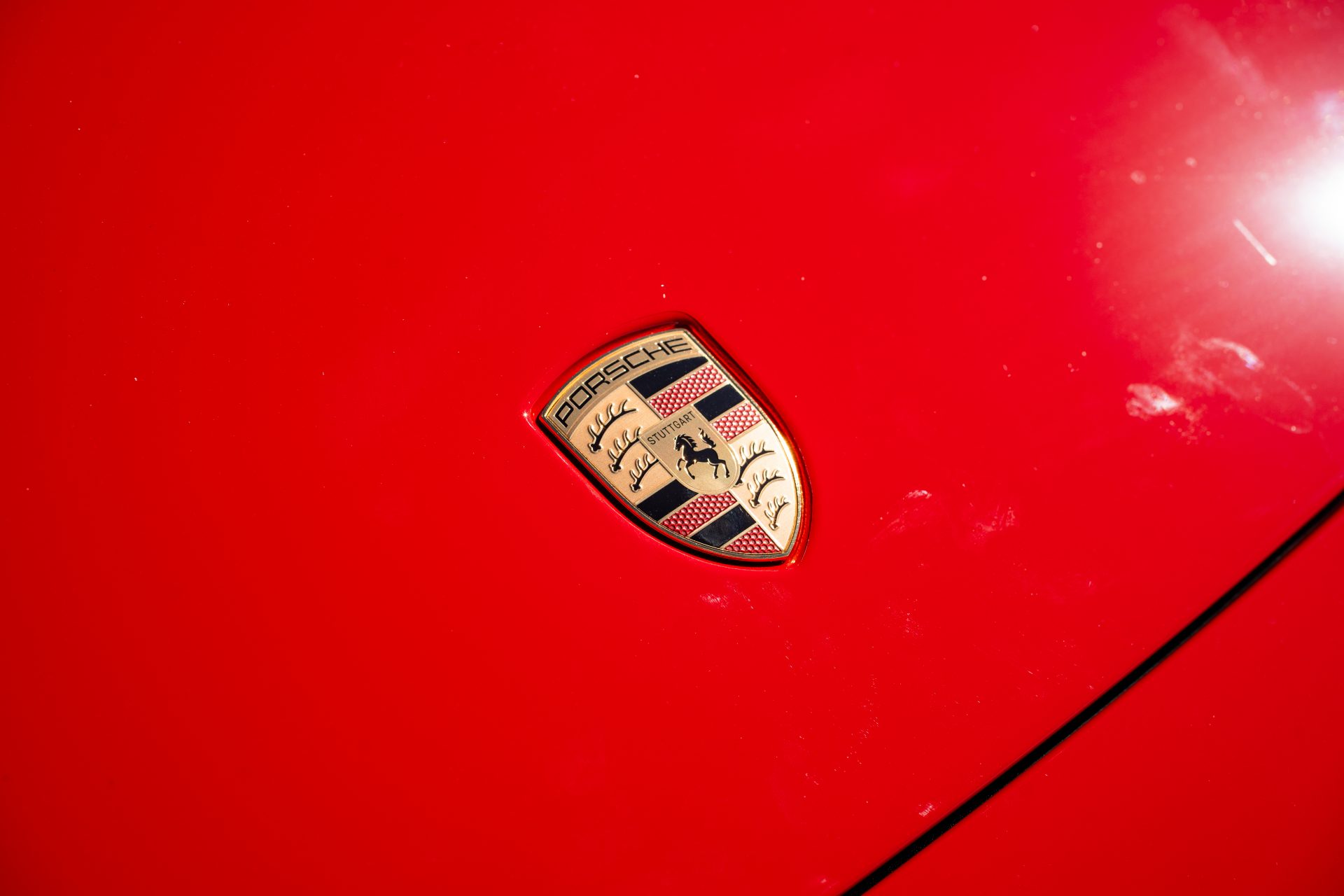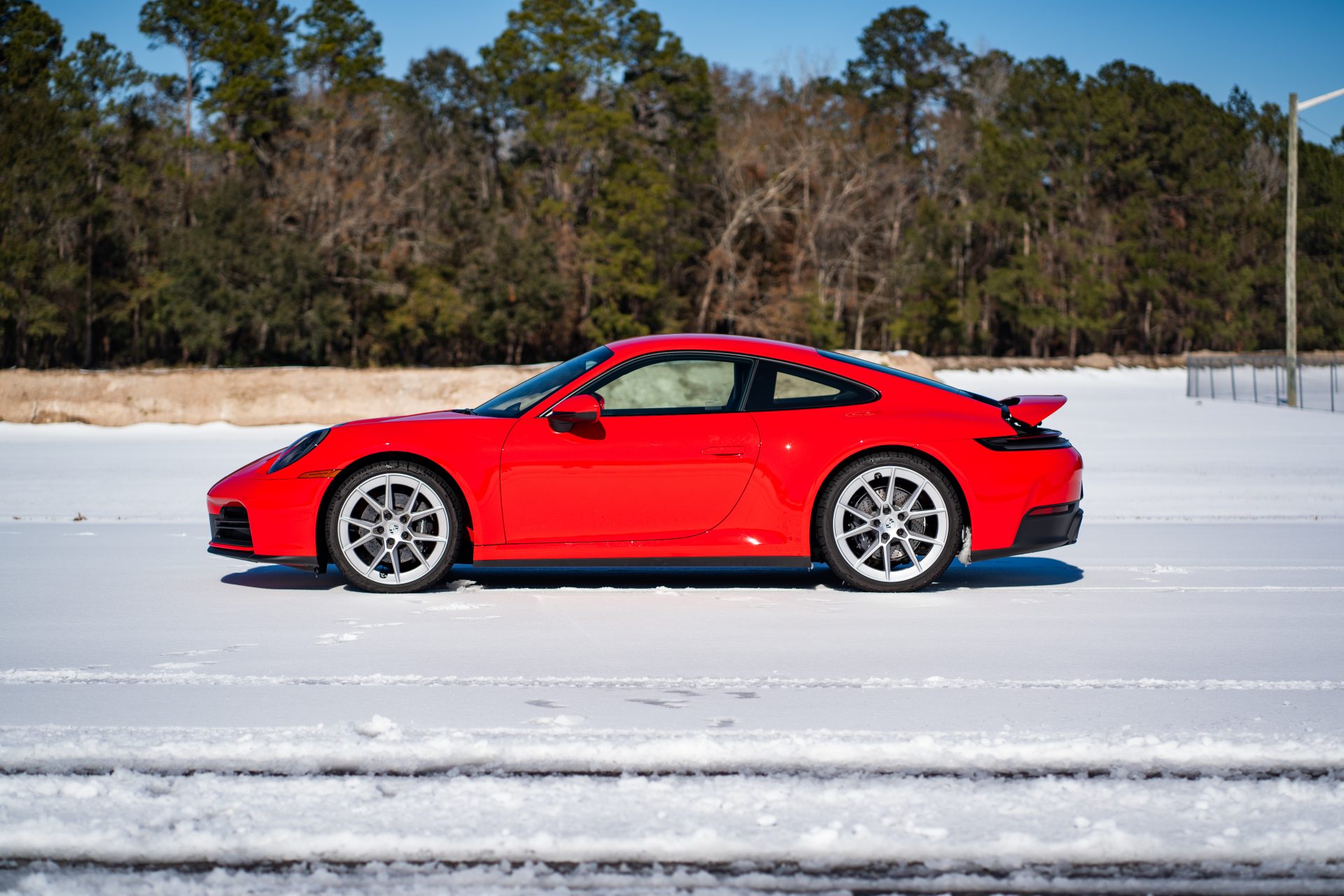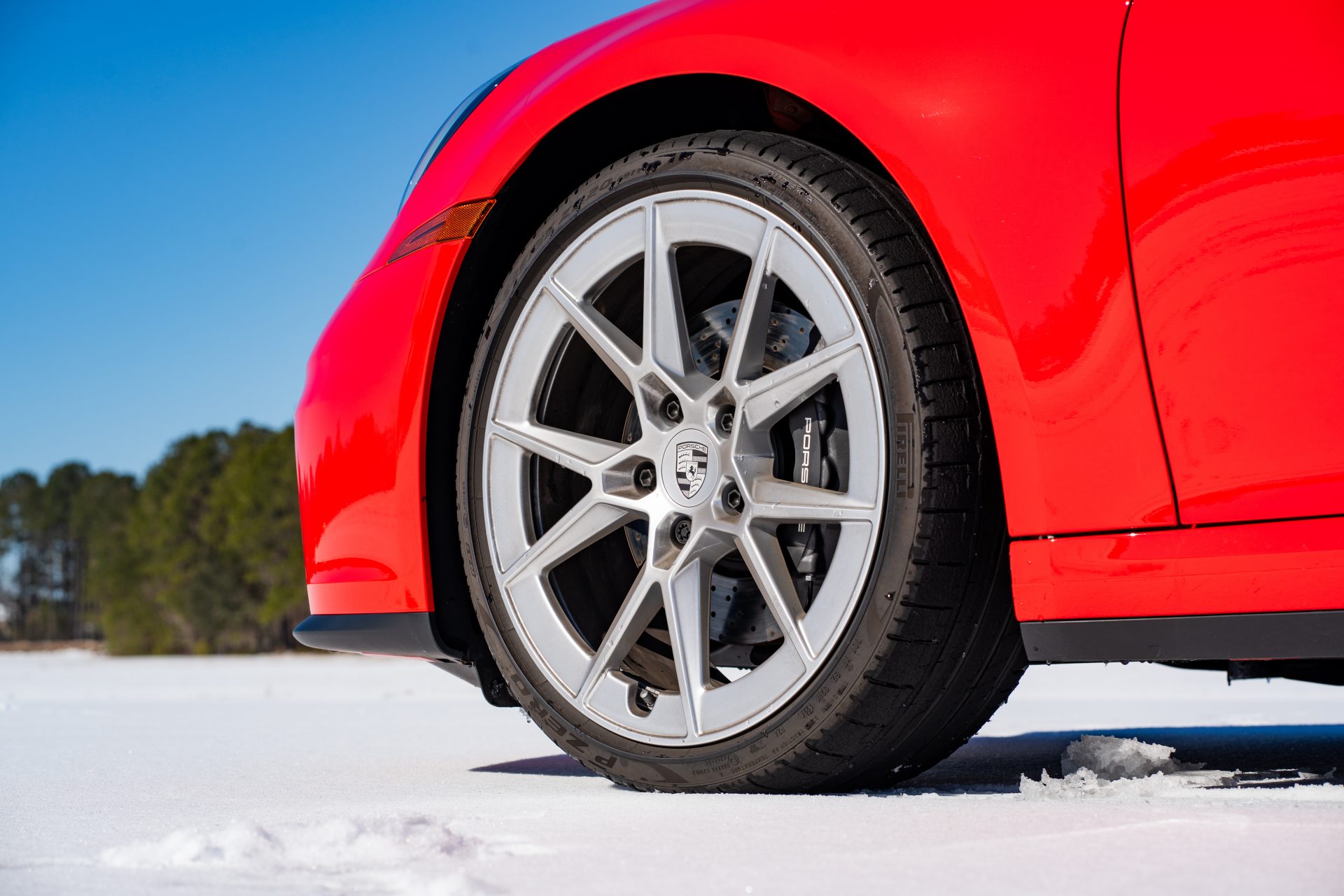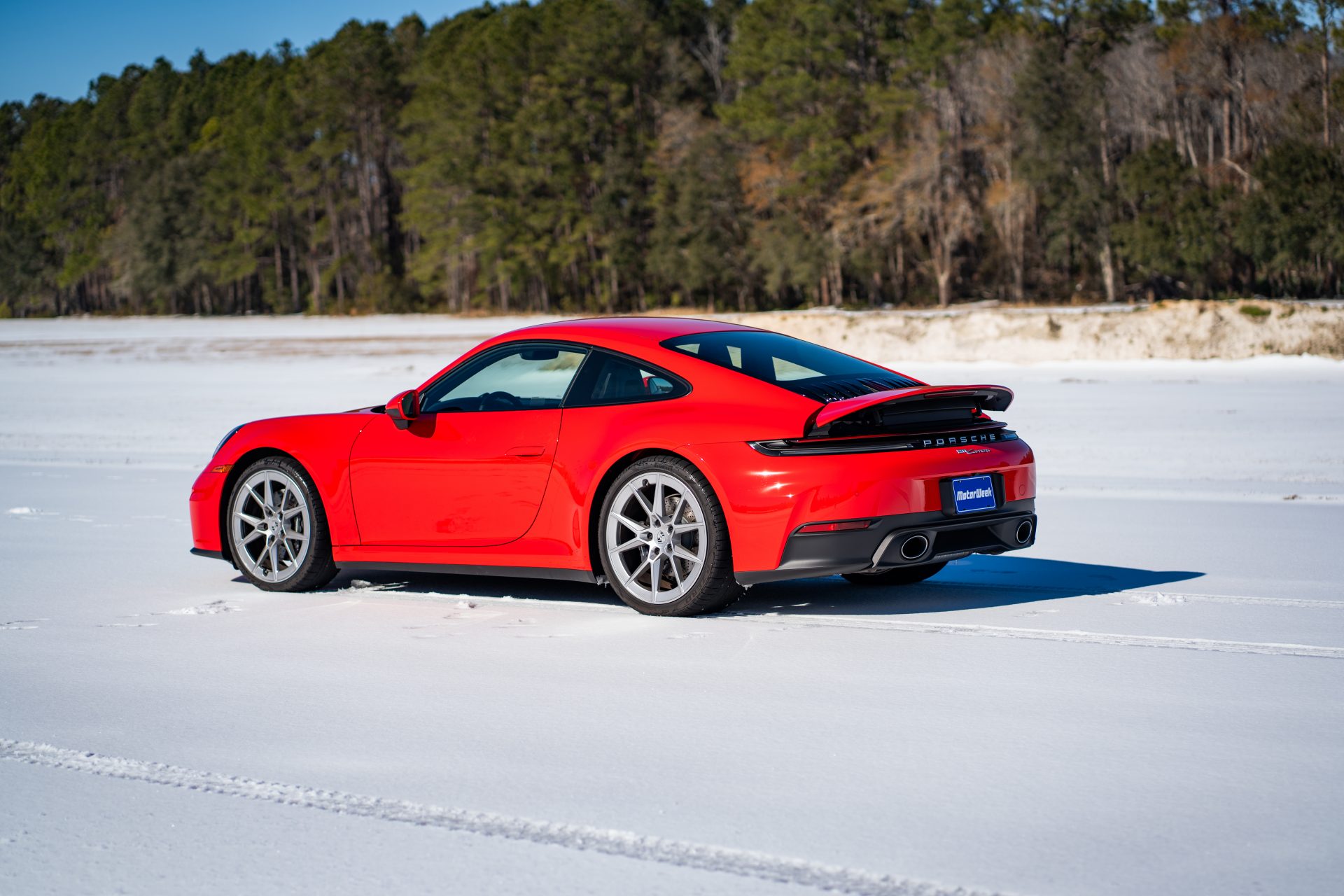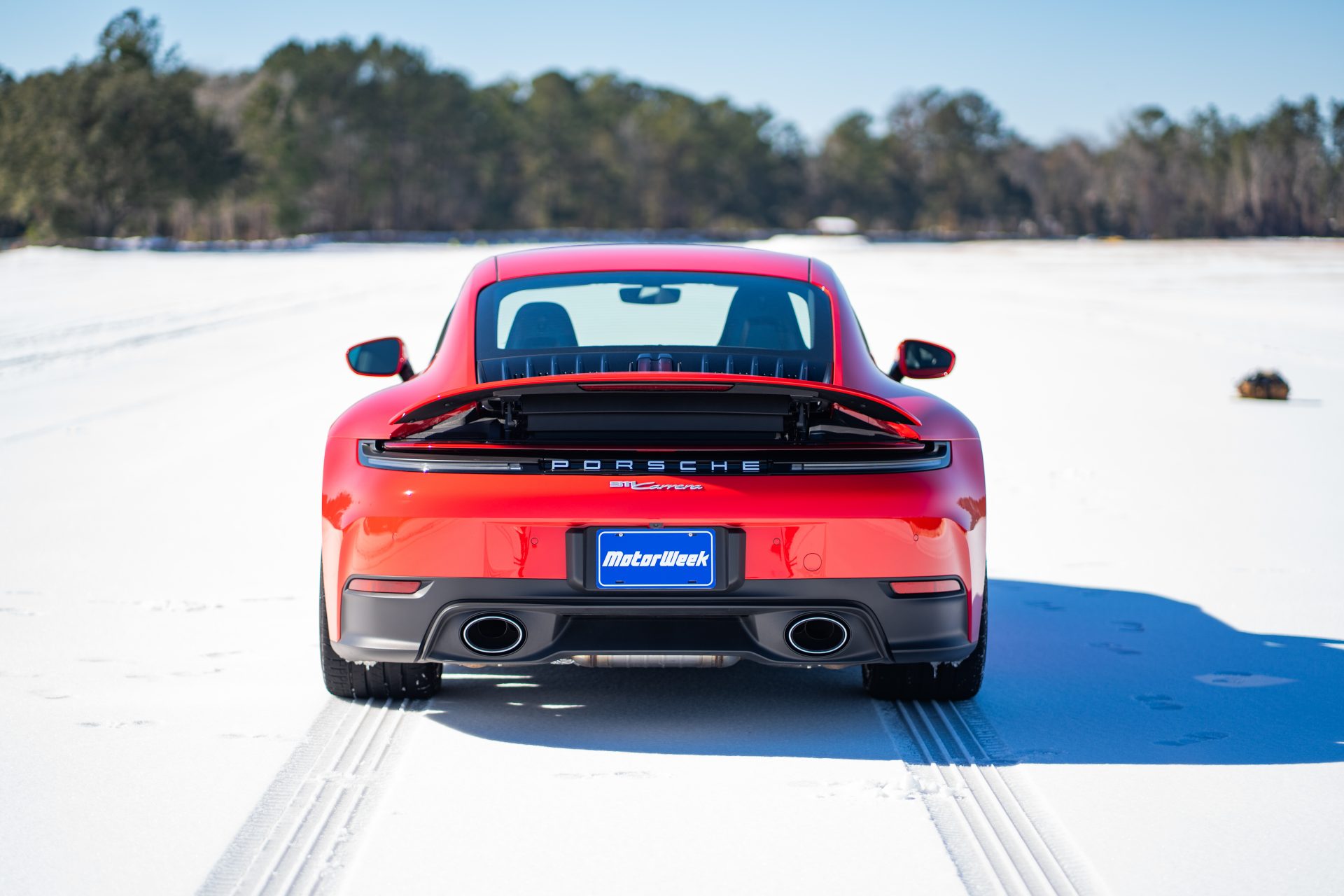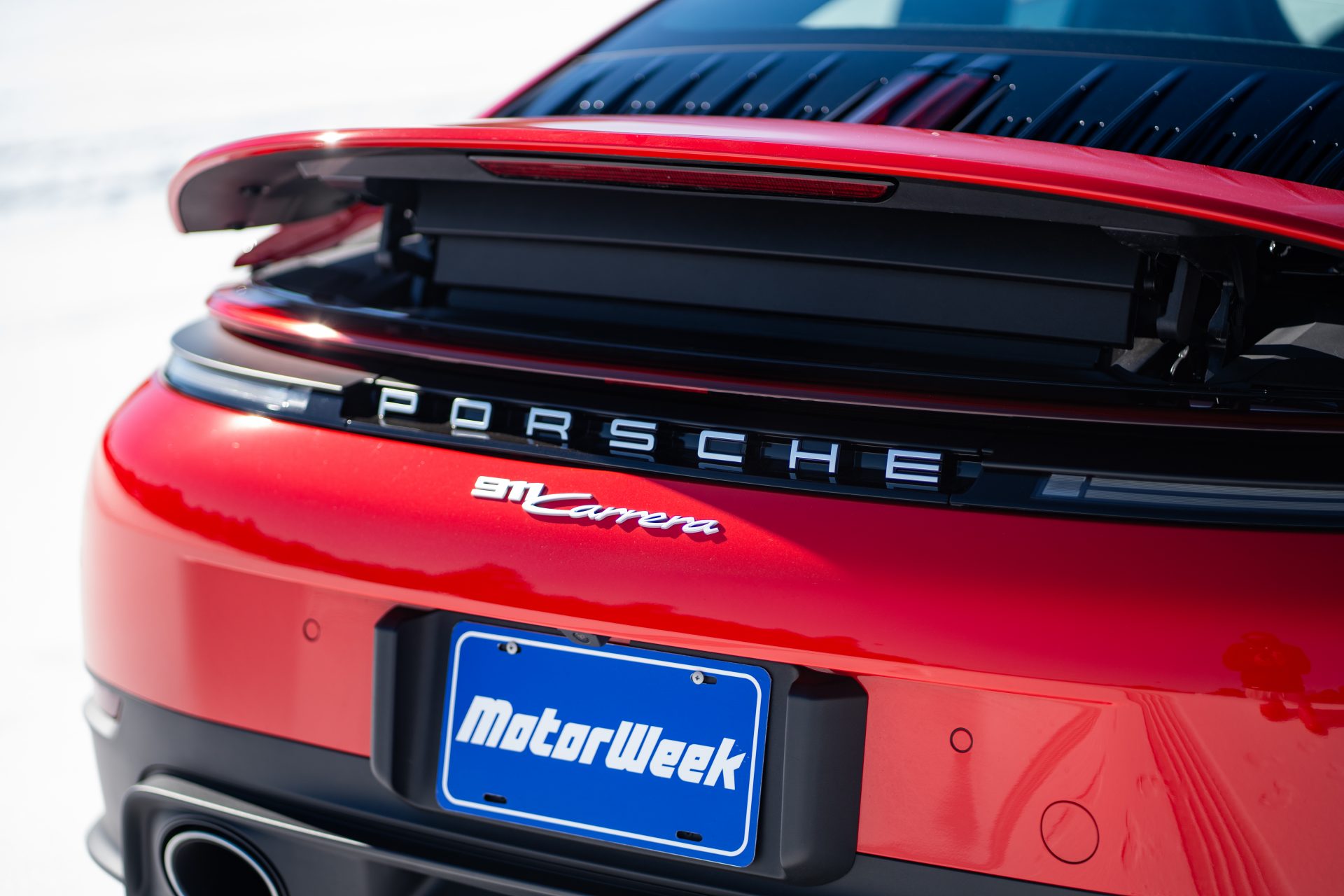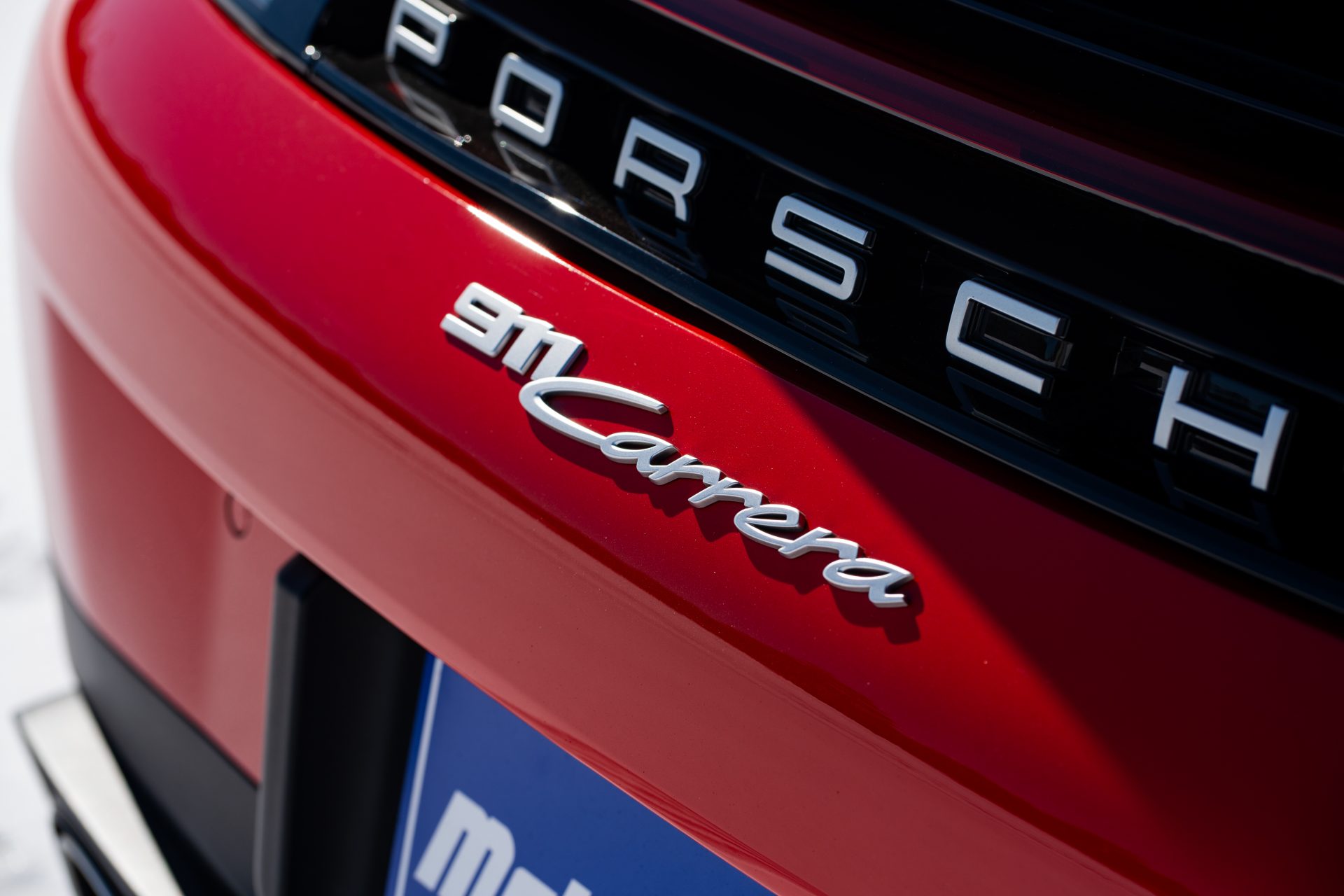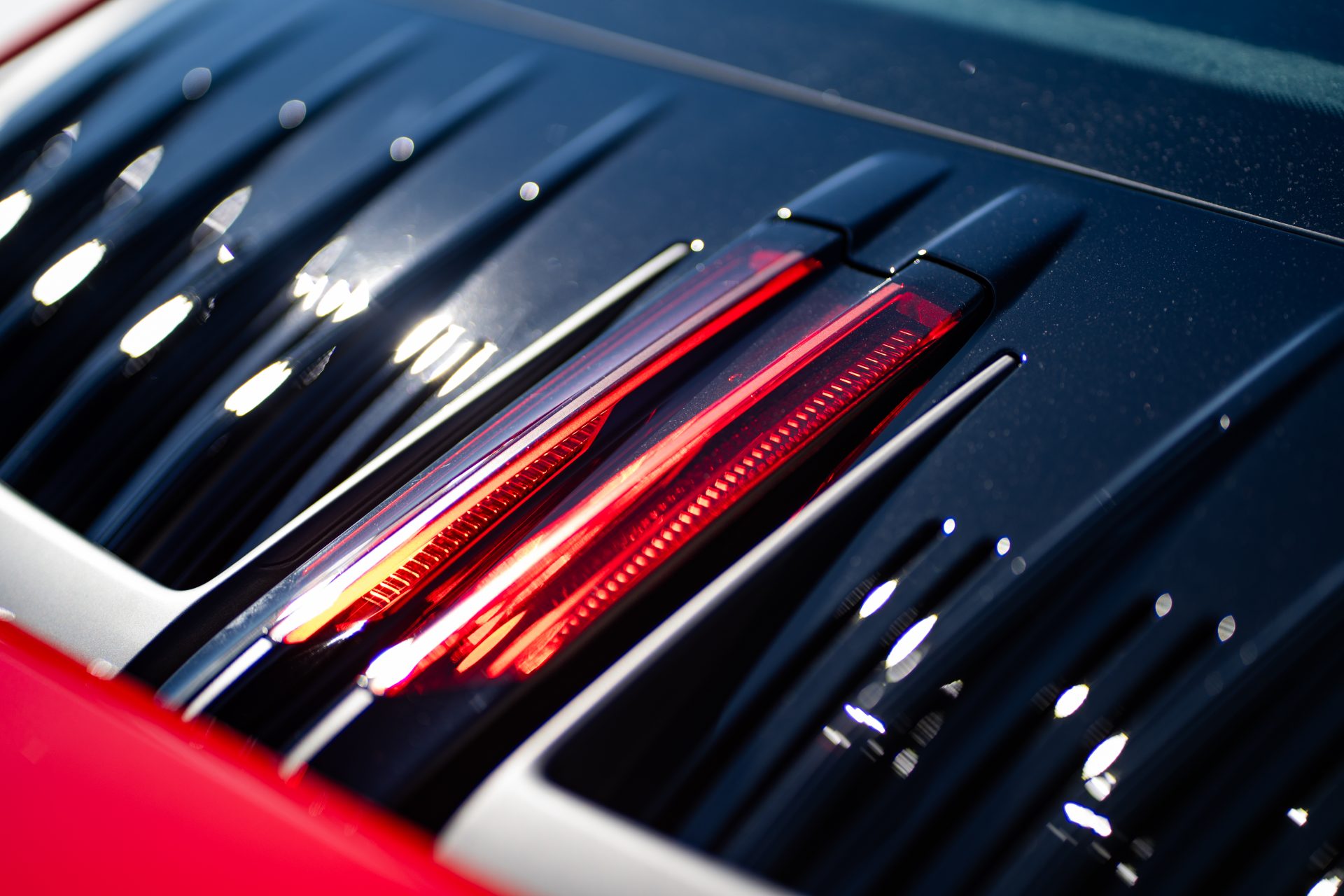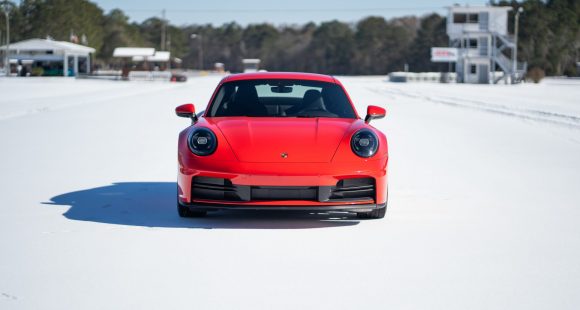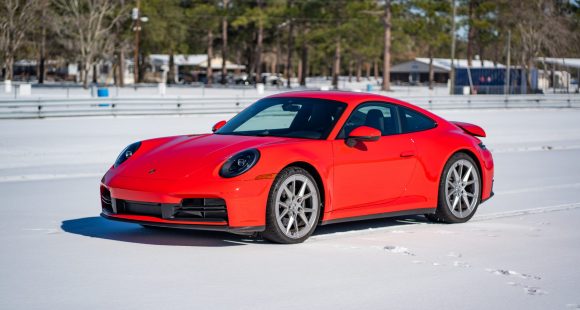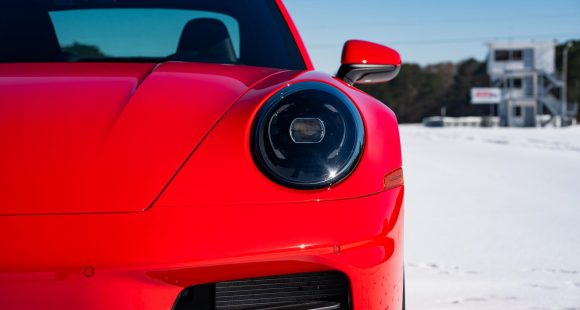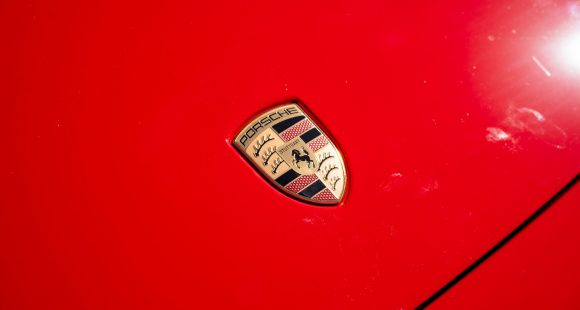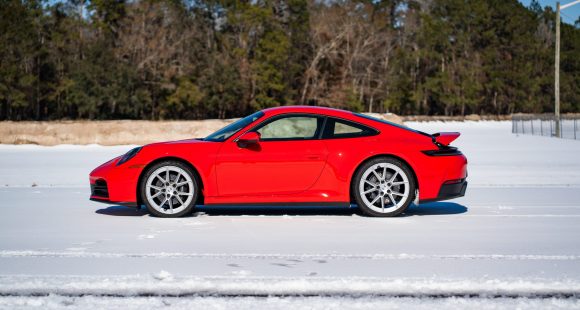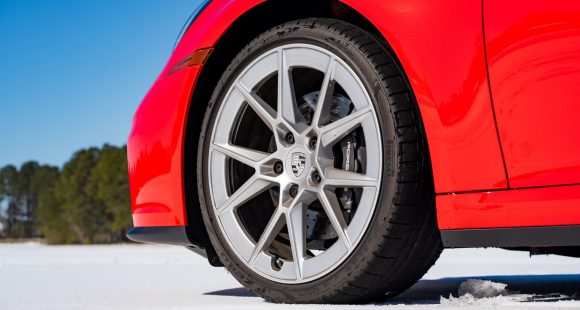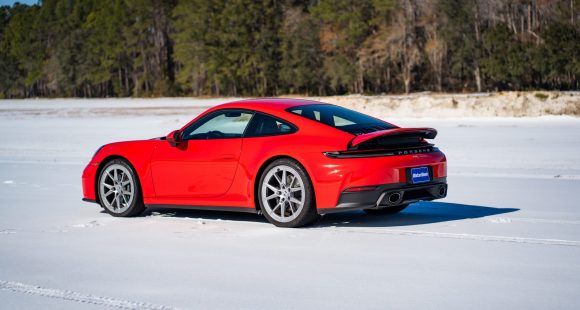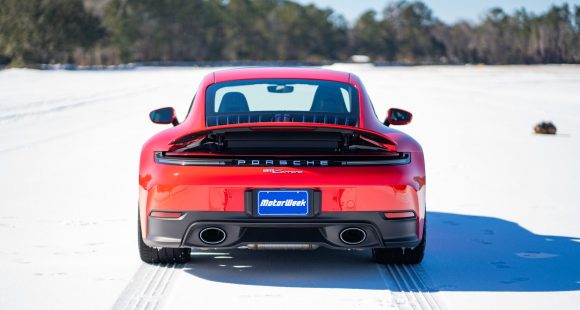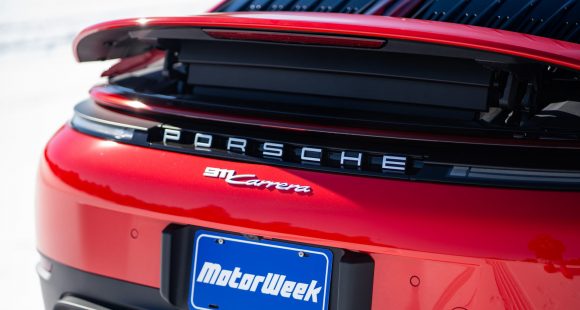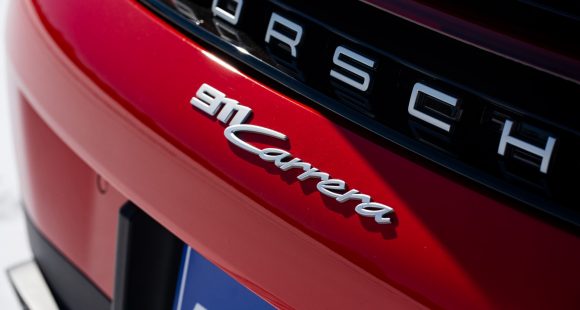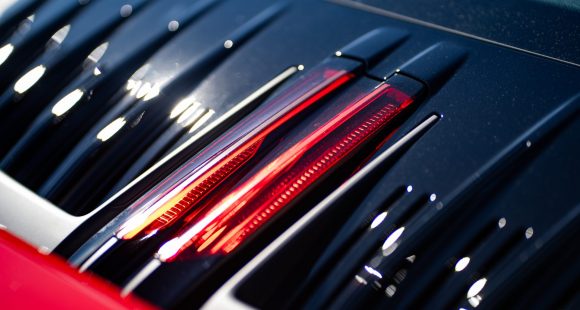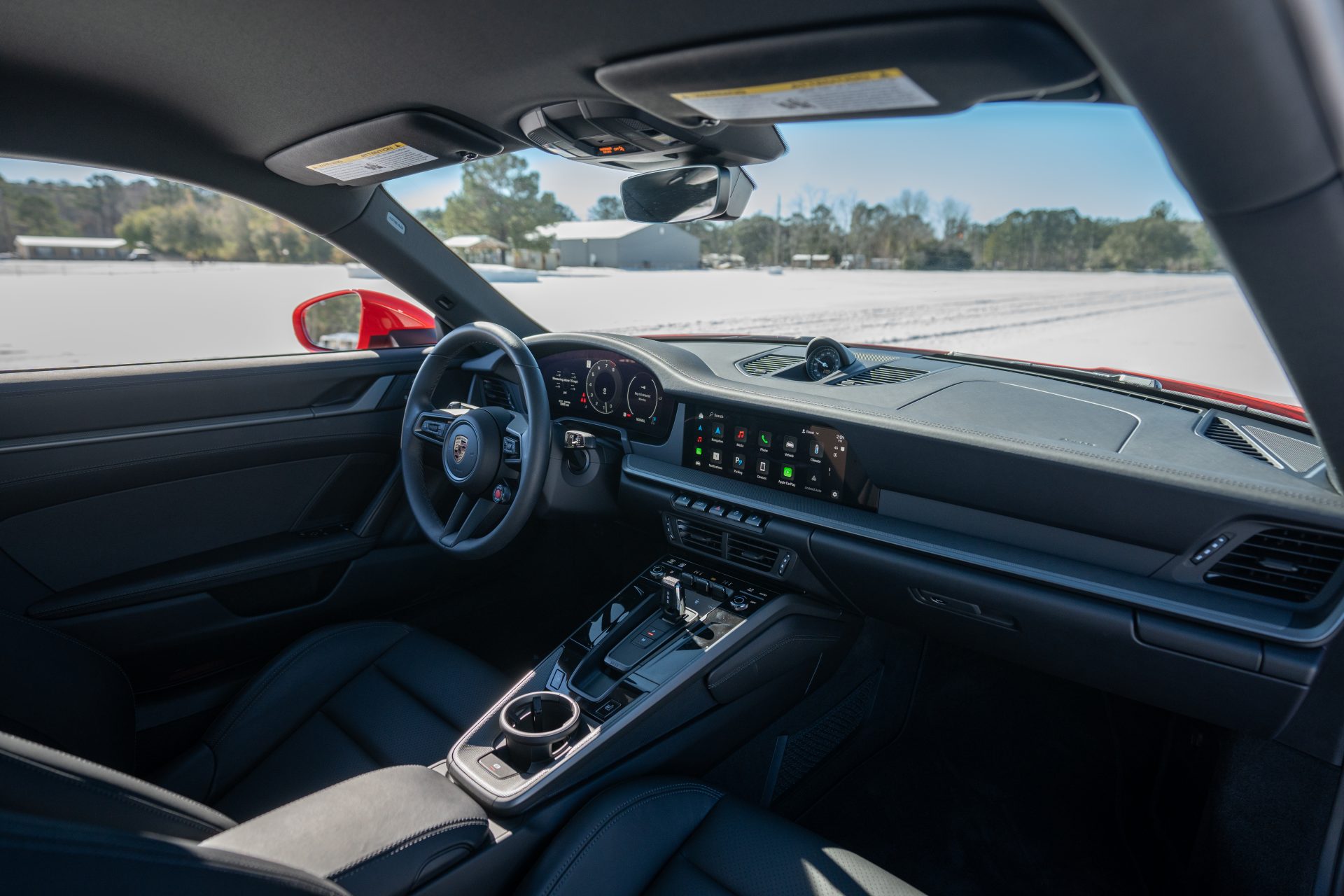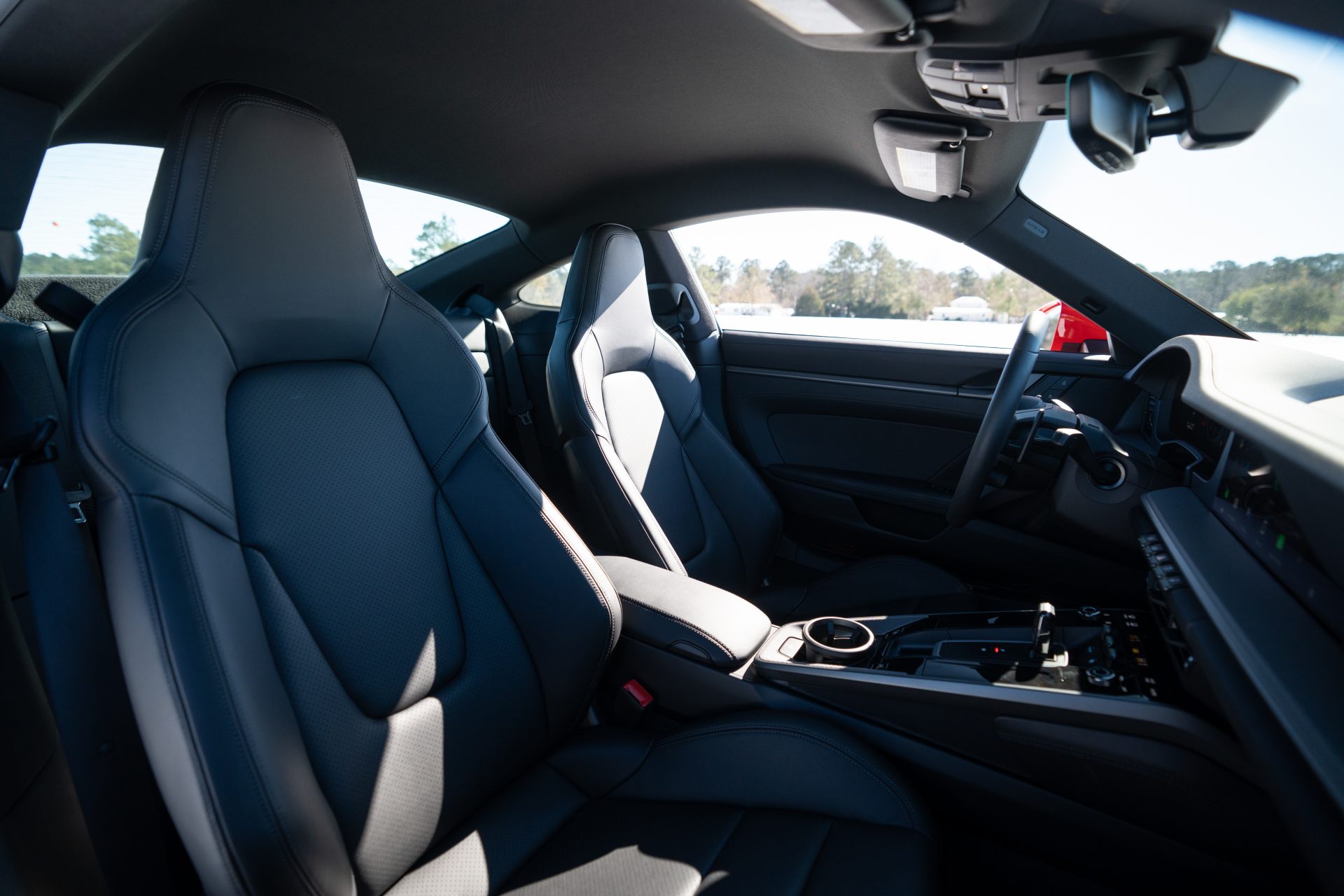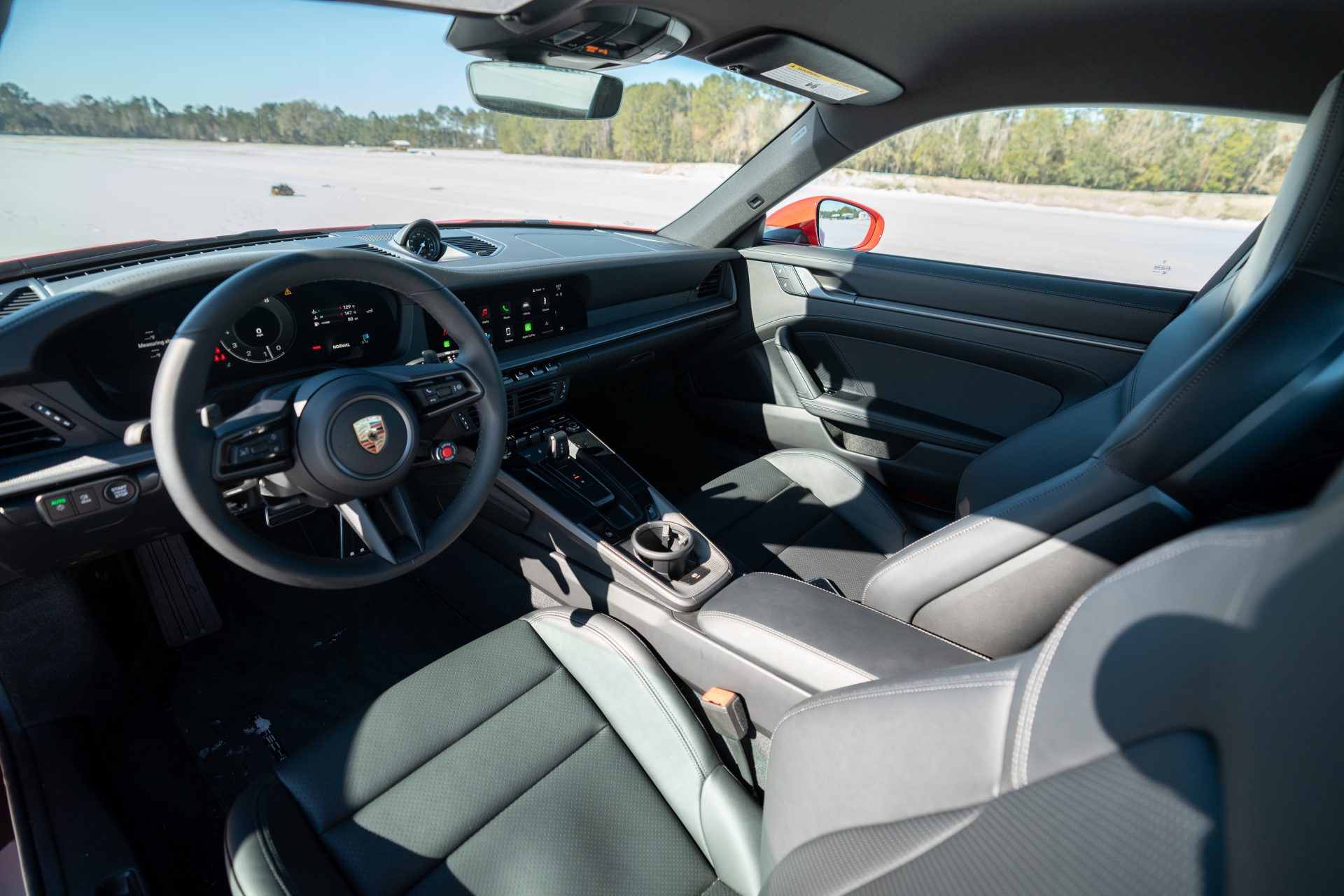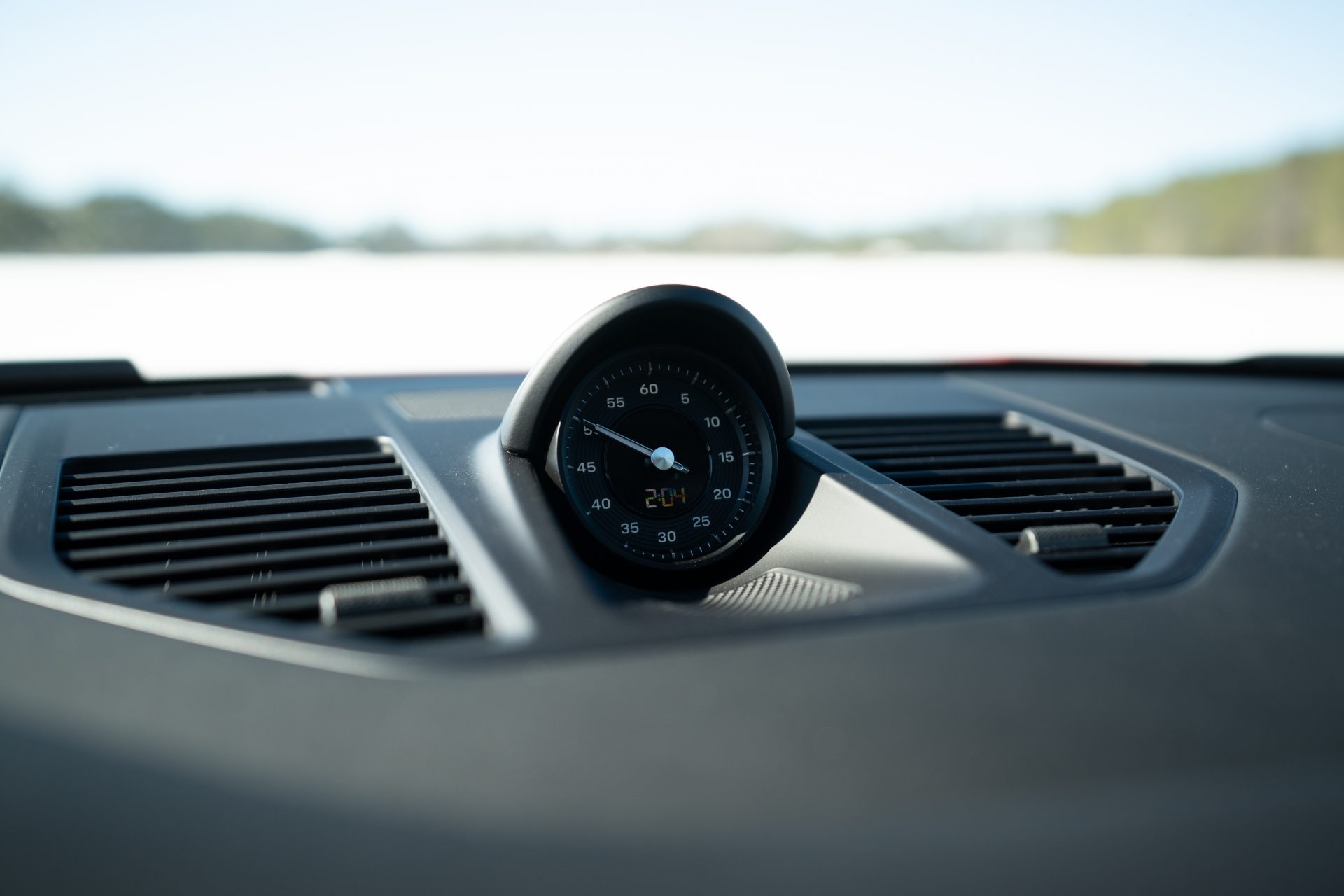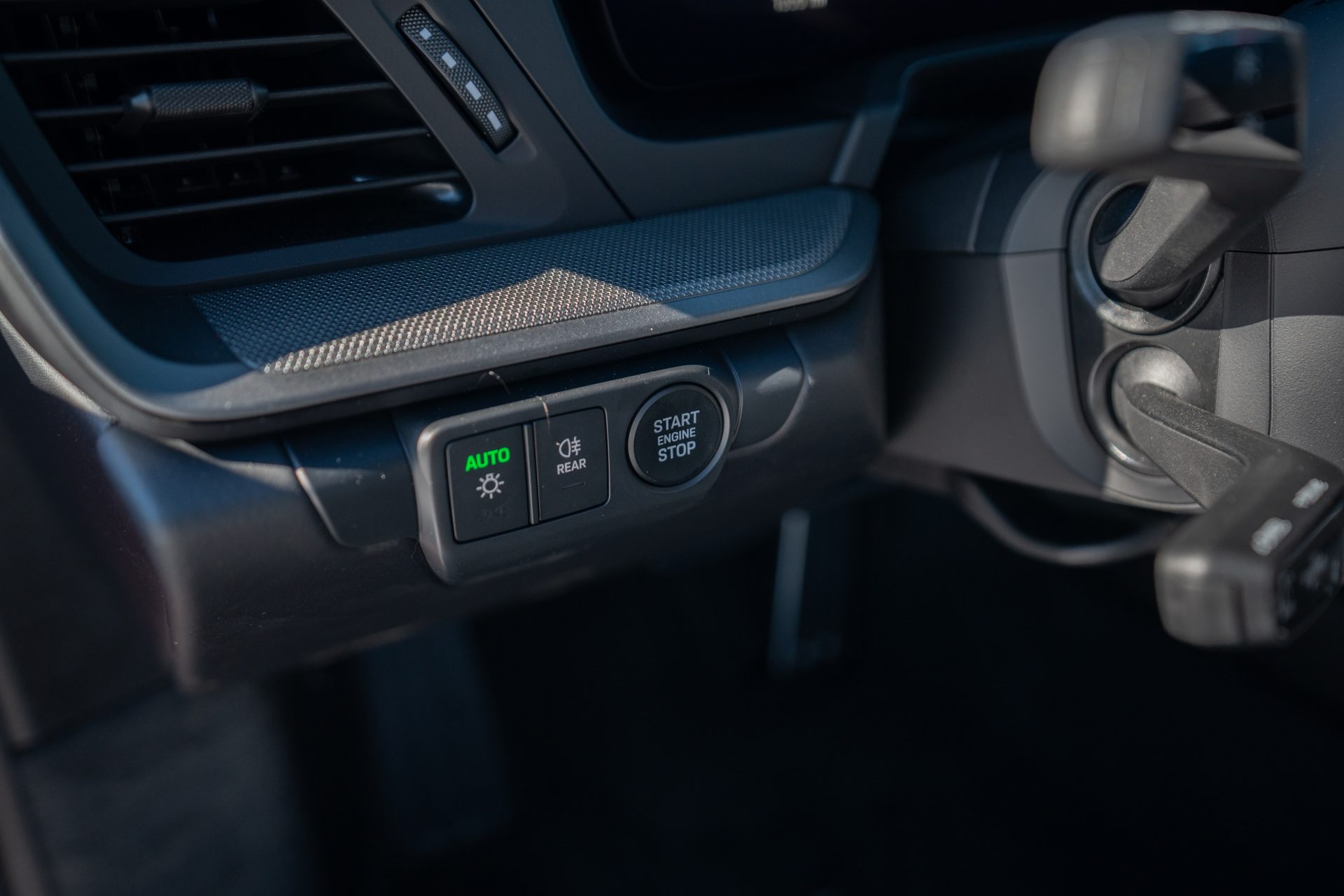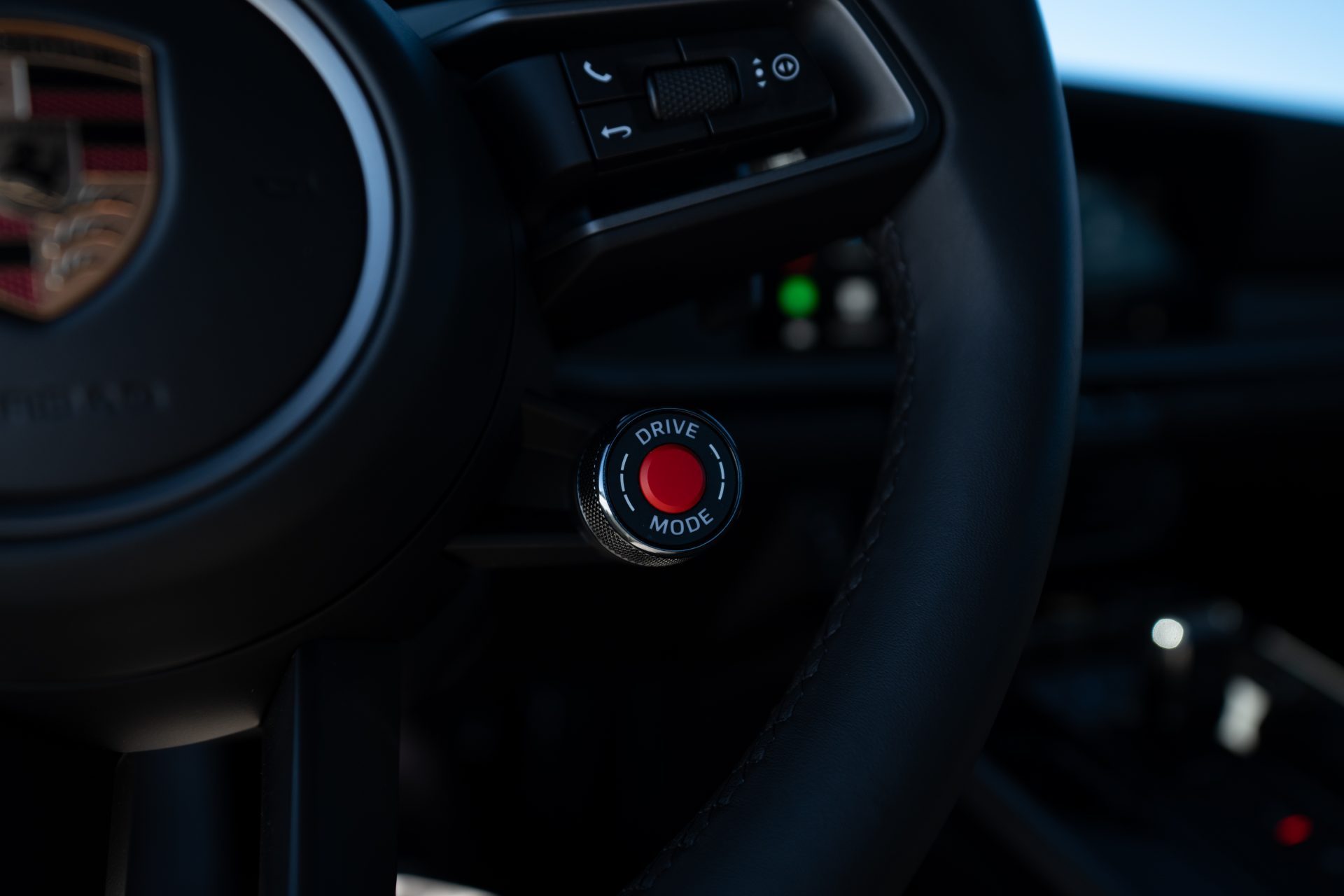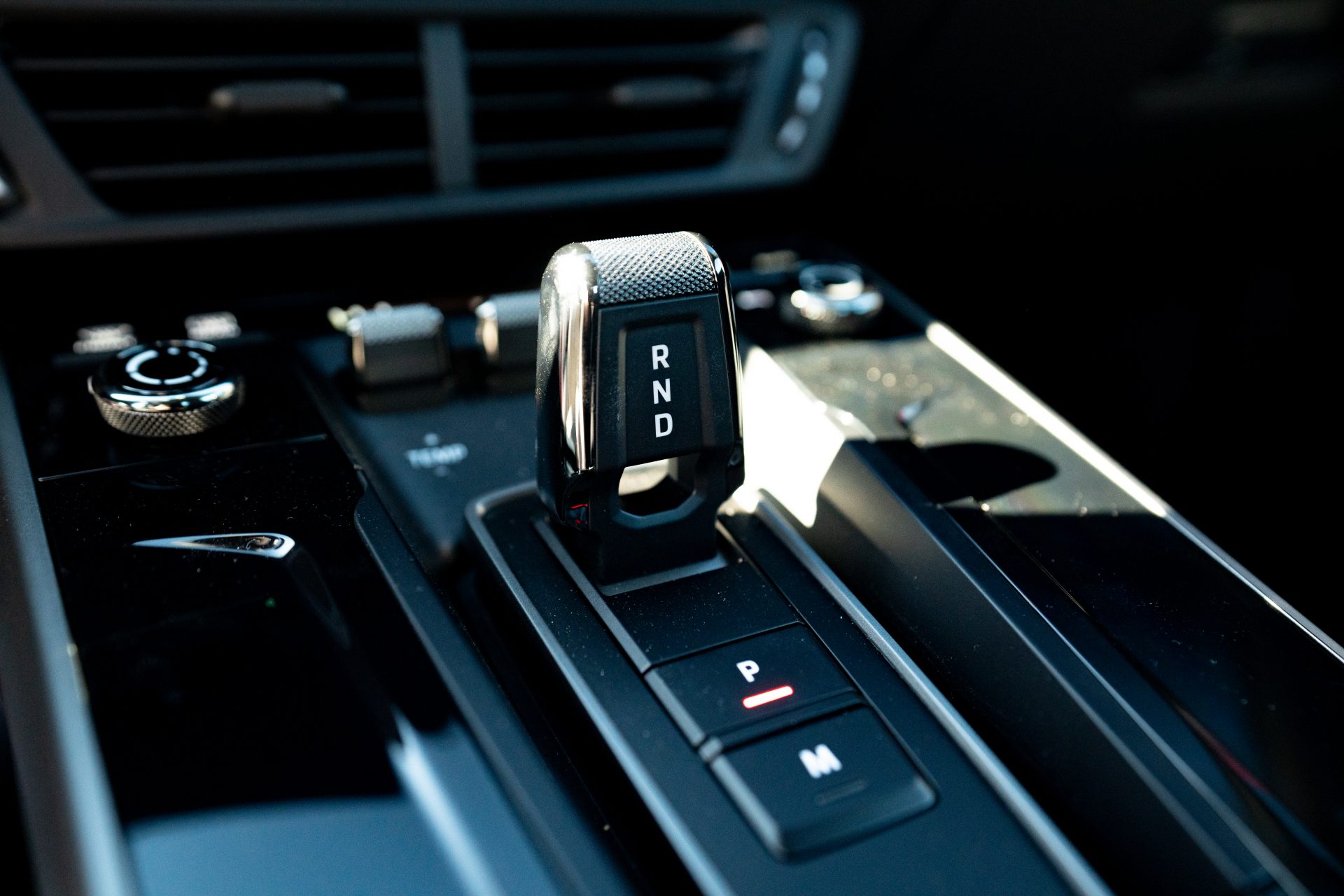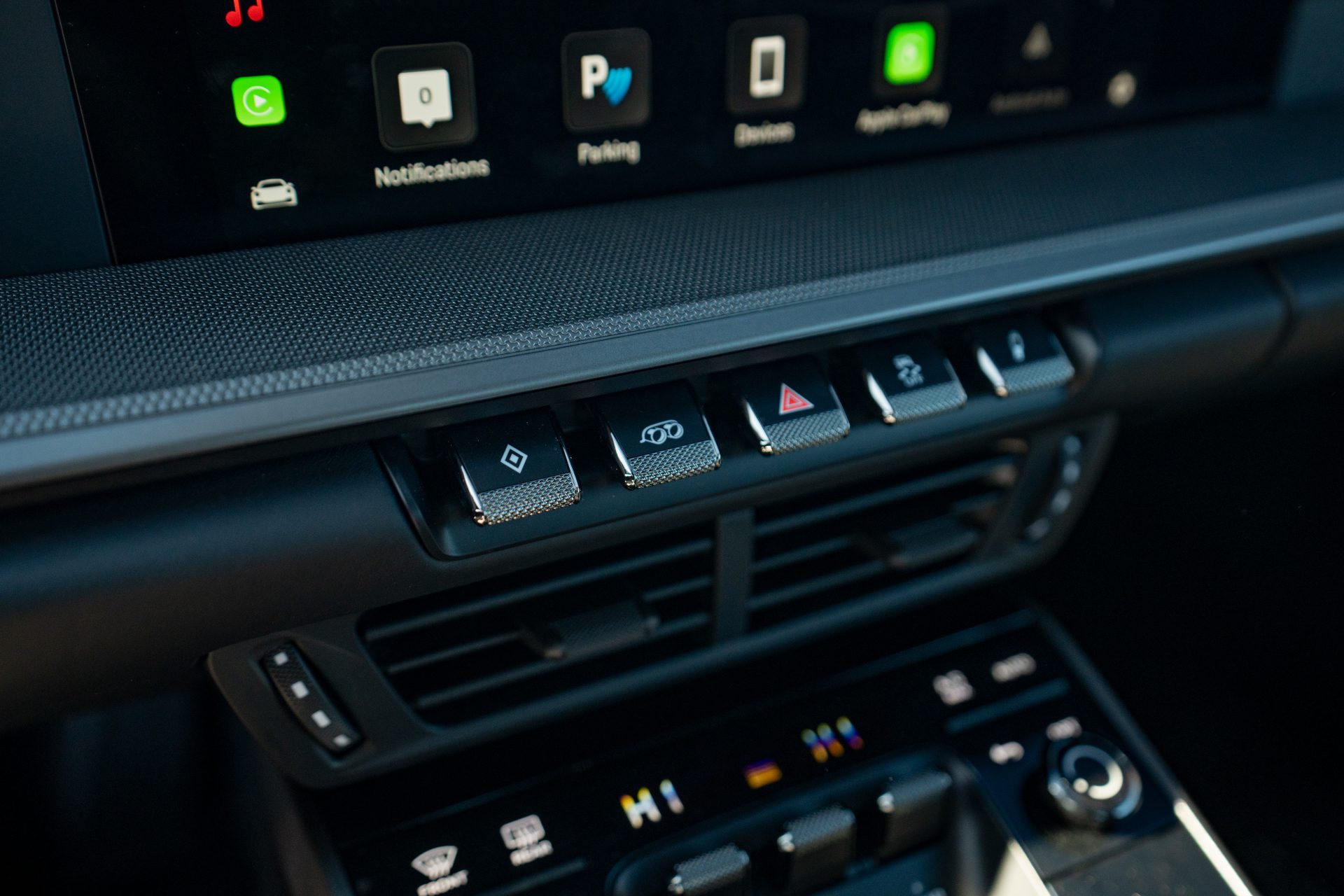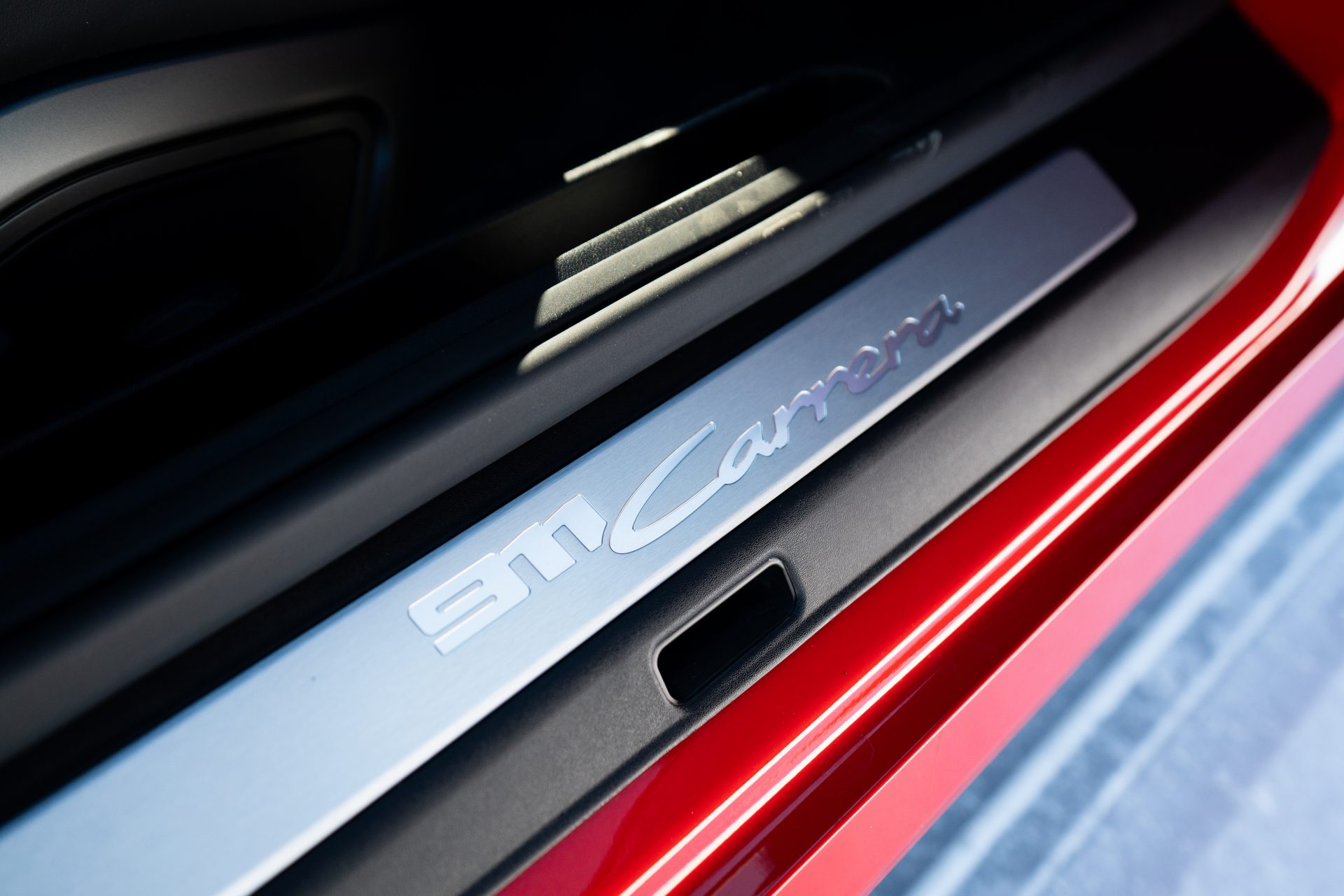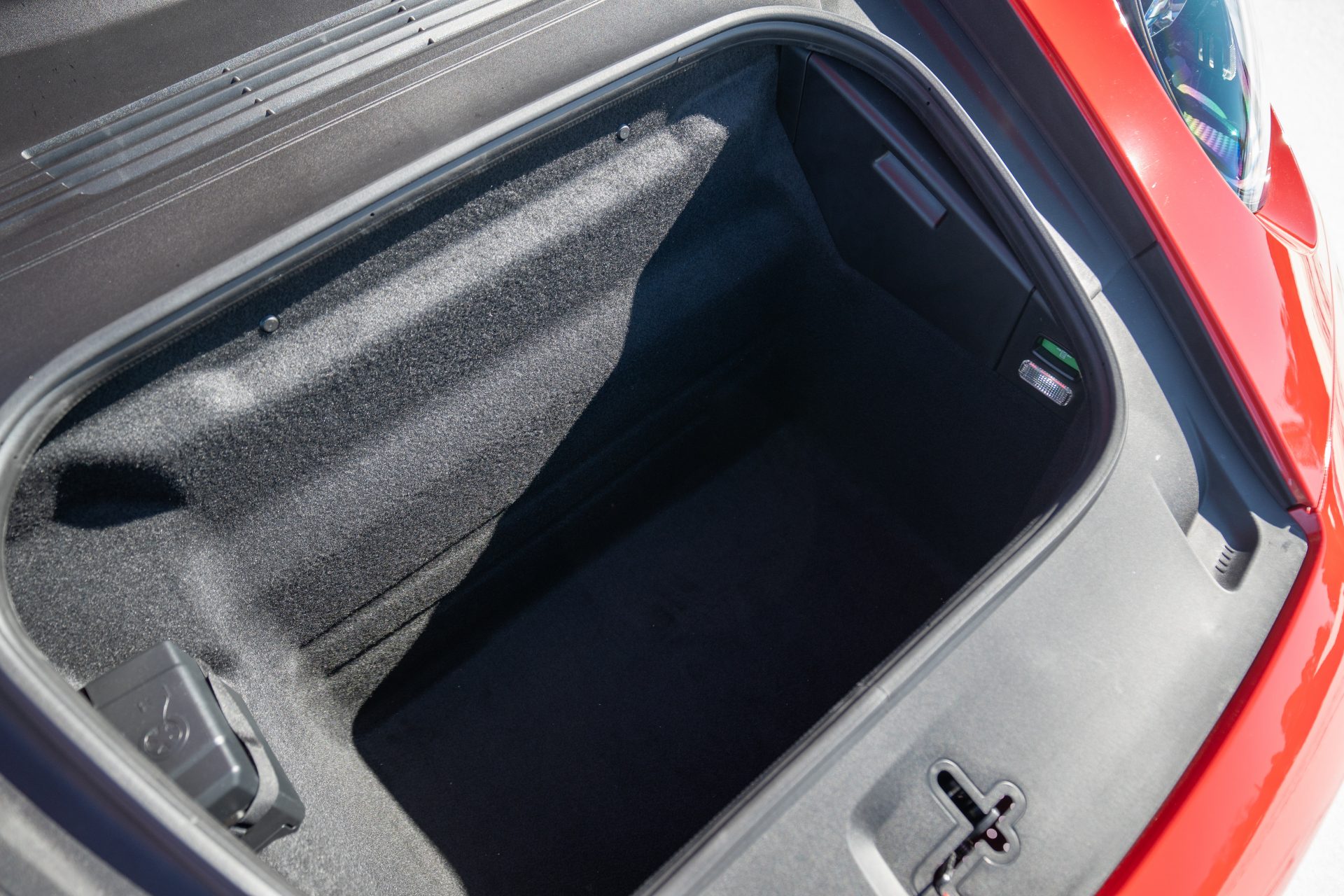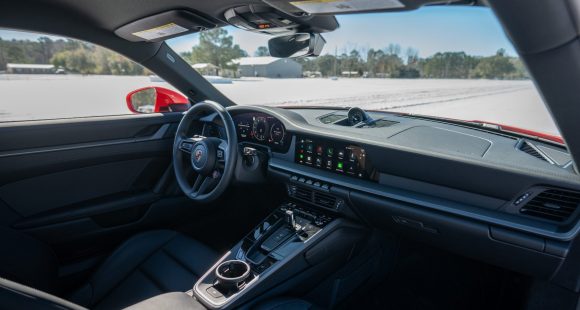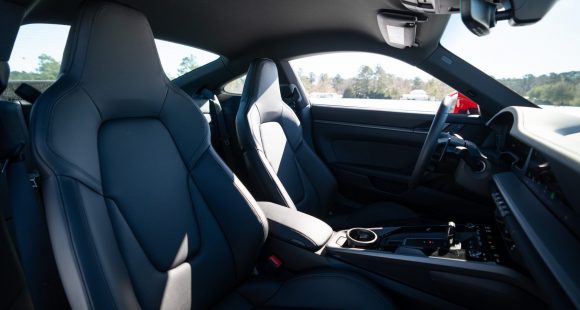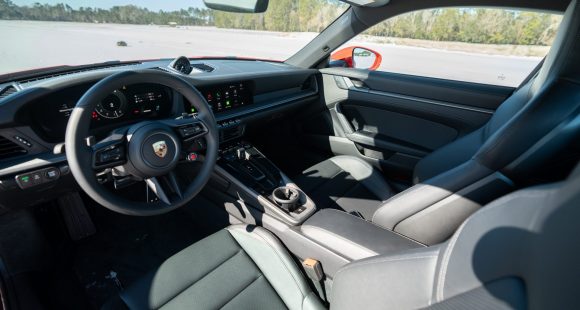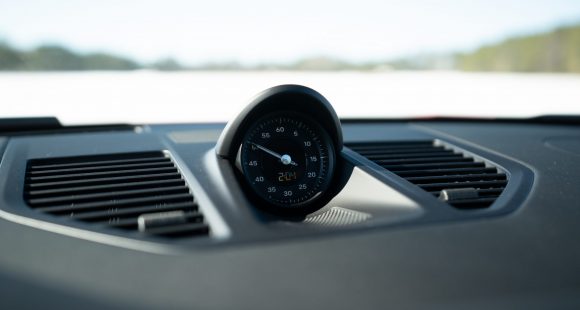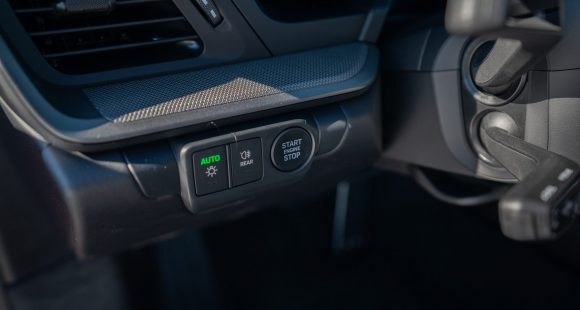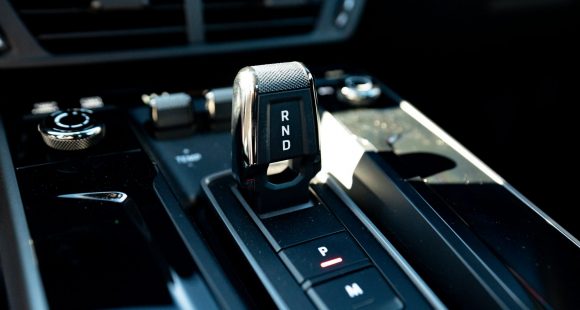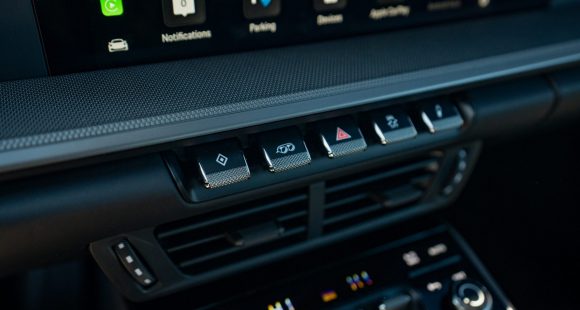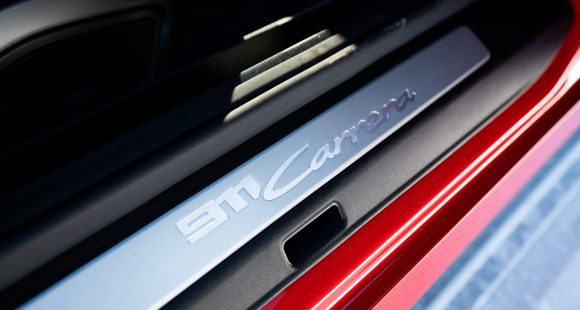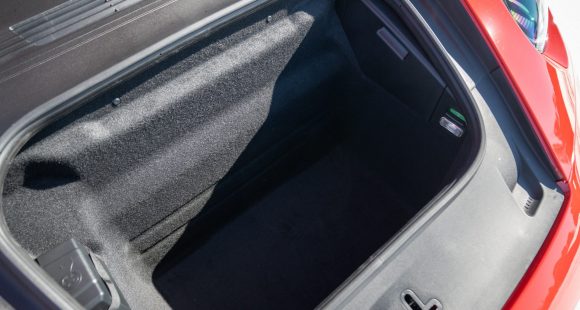2016 Hyundai Tucson
So far, Hyundai has resisted taking a plunge into the rapidly expanding pool of pint-size subcompact crossovers. But, that’s understandable as their quart-size Tucson compact ute delivers a lot more space for about the same price. Well now there’s a new Tucson, and that more for less aptitude just got even bigger.
The Hyundai Tucson has been around long enough to play a major role in Hyundai’s growth, from upstart act to Broadway box office smash.
For 2016, introducing a little more razzle-dazzle to the audience is a good play, and one consistent with most recent Hyundais. The front looks very big and bold for a compact crossover ute, and there are lots of lines flowing from there to the rear.
It very much looks like a scaled down Santa Fe, and when in Limited trim, with 19-inch wheels and LED headlights, it should help reel in those “elusive but highly sought after” younger buyers.
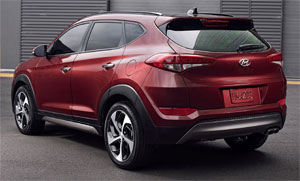 Dimensions have been stretched over last year, it’s both longer and wider; and of course that translates to more room in the cabin for both people and parcels.
Dimensions have been stretched over last year, it’s both longer and wider; and of course that translates to more room in the cabin for both people and parcels.
Base engine is a 2.0-liter I4 with 164-horsepower and 151 lb-ft. of torque. Up level trims get a smaller, but stronger, 1.6-liter I4 with turbo assistance that spins up 175-horsepower and 195 lb-ft. of torque.
It also adds a 7-speed Dual Clutch Transmission, while the 2.0-liter makes do with a traditional 6-speed auto. Both engines can be had in front and lockable all-wheel drive with active cornering control.
At our test track, our turbo equipped Limited felt spirited, but far from muscular off the line; with trips to 60 taking a mundane 8.4-seconds. Torque is pretty good down low, running out of steam at the high end; but it’s certainly adequate for a compact ute. The ¼-mile pass took 16.5-seconds at 86 miles-per-hour.
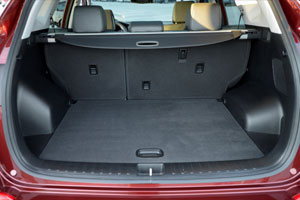 As for the DCT transmission, it proved adequate, with some occasional hesitations to get going from a stop. We also got a “high transmission temp” warning during our track day. Braking distances averaged a short 120-feet from 60; but with a long travel from the squishy pedal.
As for the DCT transmission, it proved adequate, with some occasional hesitations to get going from a stop. We also got a “high transmission temp” warning during our track day. Braking distances averaged a short 120-feet from 60; but with a long travel from the squishy pedal.
The chassis feels willing and able, with a composed non-floaty feel that’s more firm than plush. But during hard corners, the “traction control monster” awakens easily, keeping you from exploiting that feeling too much.
Taking in the scenery at a more relaxed pace, the ride is surprising enjoyable. It’s noticeably quieter and more compliant than before. The last Tucson was in a word “rough”. So Hyundai’s, increased attention to ride and handling is really paying off.
As for the ever-important drive environment inside, ergonomics are great, as is seat comfort.
The smooth looking IP is dominated by either a 5.0 or 8.0-inch center touchscreen. Hyundai’s infotainment system works well, among the best in the business, and includes a standard back-up camera.
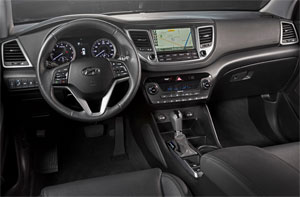 Despite numbers that indicate there’s a bit less legroom for rear seat passengers than before, it felt plenty roomy to us. And it enabled cargo space to go way up; now 31.0 cubic-ft. behind the standard split-folding rear seats, 61.9 cubic-ft. with them folded. That’s 20% more than the average subcompact ute.
Despite numbers that indicate there’s a bit less legroom for rear seat passengers than before, it felt plenty roomy to us. And it enabled cargo space to go way up; now 31.0 cubic-ft. behind the standard split-folding rear seats, 61.9 cubic-ft. with them folded. That’s 20% more than the average subcompact ute.
Hyundai’s hands free smart lift gate is also available.
Despite the small stature, there’s full size safety here; with an automatic emergency braking system that worked flawlessly in our barrier test. Sudden stops were abrupt enough to leave some skid marks on the pavement.
Government Fuel Economy Ratings are 24-City, 28-Highway, and 26-Combined. So our average of 26.8 miles-per-gallon of Regular was right on. The Energy Impact Score is about average for all vehicles at 12.7-barrels of oil use and 5.8 tons of CO2 emissions yearly.
And now the fine print. Base Tucson stickers for $23,595. That’s a grand more than last year. The top Tucson Limited AWD starts at $32,195.
Those higher admission prices do put a crimp in our rave review, as they are now a good deal more than a comparably equipped subcompact ute, while still less than the bestselling compacts. Still, the Tucson is fresher and better equipped. Star qualities that should impress both the critics and the masses; keeping Hyundai’s marquee shining bright.
Specifications
- Engine: 1.6 liter I4
- Horsepower: 175
- Torque: 195 lb-ft.
- 0-60 mph: 8.4 seconds
- 1/4 mile: 16.5 seconds @ 86 mph
- EPA: 24 mpg city / 28 mpg highway
- Energy Impact: 12.7 barrels of oil/yr
- CO2 Emissions: 5.8 tons/yr
2025 Porsche 911 Carrera
Ever Evolving 911 Reaches New Heights
The Porsche 911 has existed for 60 years now! Amazing! And, you could argue that major changes over all those years have been relatively few, as constant incremental improvement is more the way that Porsche does business. With that in mind, let’s hit the track in the latest 911 and see what constant improvement means for 2025.
We’ve driven so many 911s here at MotorWeek, each seemingly more special than the last, so it’s a bit refreshing to be ripping around Savannah’s Roebling Road Raceway in a 2025 Porsche 911 that’s about as close as you can get to base these days. And the fact that it’s just as fun as all those exclusive pieces says a lot about how far the 911 has come. Perhaps it also speaks to how much a base 911 will set you back today as well; more on that later.
For now, we’re just thinking about the next apex, holding steady throttle as we approach, and getting on it way sooner than you’d expect without upsetting anything, as the 911 rockets off the corner thanks to tremendous grip and a PDK trans that finds the perfect gear before we even gave it a thought. Even with very cold track temps, we never struggled for grip or battled any wheelspin coming off of corners. And trying to land it in that perfect spot in braking zones is easy with strong brake performance that was predictable and consistent lap after lap; no wandering, and great feedback too.
Yes, even the standard 911 is near pure perfection on a racetrack. It gives you all the right feedback, stays incredibly flat through corners, makes you always feel totally in control, and again is just plain fun. Unless you’re chasing lap times, there’s really no need to head further up the 911 tree. Though it is worth noting the few upgrades that were on our Carrera did help the situation a little. The 20- and 21-inch Carrera S wheels enabled plenty of grip from the 305 Pirelli P Zero tires, the Sport Chrono Package allows 0-60 sprints of 3.7 seconds, an extended range fuel tank meant we could lap all day without having to fill up, and the fantastic Sport Seats provided great support and better comfort than we remember experiencing in a 911. The Sport Exhaust system didn’t add anything to performance, but made things sound a whole lot better, and the oval silver tips look great too.
We never struggled for grip or battled any wheel spin coming off of corners.
Our track time got cut short thanks to a rare snowstorm in Coastal Georgia, but the white stuff and blue sky made the perfect backdrop for our Guards Red Carrera. Exterior tweaks for what is officially the 992.2 include a reshaped front fascia with improved aerodynamics. All front lighting is now contained within the Matrix Design LED headlight housing. The rear fascia has also been smoothed out, the license plate moved higher, and Porsche 3D block lettering spelled out across the back beneath the active rear spoiler and new decklid grille.
Even without Turbo in the name, the standard 911 engine is indeed a turbo these days, a 3.0-liter flat-six twin-turbo delivering 388 horsepower and 331 lb-ft strictly to the rear wheels in the Carrera Coupe.
Inside the cabin, the 911 continues its slow crawl towards the modern, now including a 12.6-inch fully digital gauge display and a start button located on the left side of the steering wheel, with drive modes easily accessible on the wheel itself. In another no brainer move, Porsche now makes the rear seat a no cost option, so you can choose if you want it or not.
Government Fuel Economy Ratings are 18 City, 25 Highway, and 21 Combined. That’s only slightly worse than average for the Energy Impact Score; 14.2 barrels of annual oil consumption with 7.0 tons of CO2 emissions.
The good news is this 911 had the fewest number of options of any Porsche that we’ve tested in some time, and it was still plenty awesome; the bad news is, a base Porsche 911 Carrera Coupe now starts at $122,095.
But can you really put value on “the force,” this mythical power that Porsche seems to have, that somehow turns average drivers into great ones? It’s useless to resist as far as we’re concerned, as it only gets better with the 2025 Porsche 911 Carrera.
Specifications
As Tested
- Engine: 3.0-liter twin-turbo flat-6
- Transmission: 8-speed PDK
- Horsepower: 388
- Torque: 331 lb-ft







